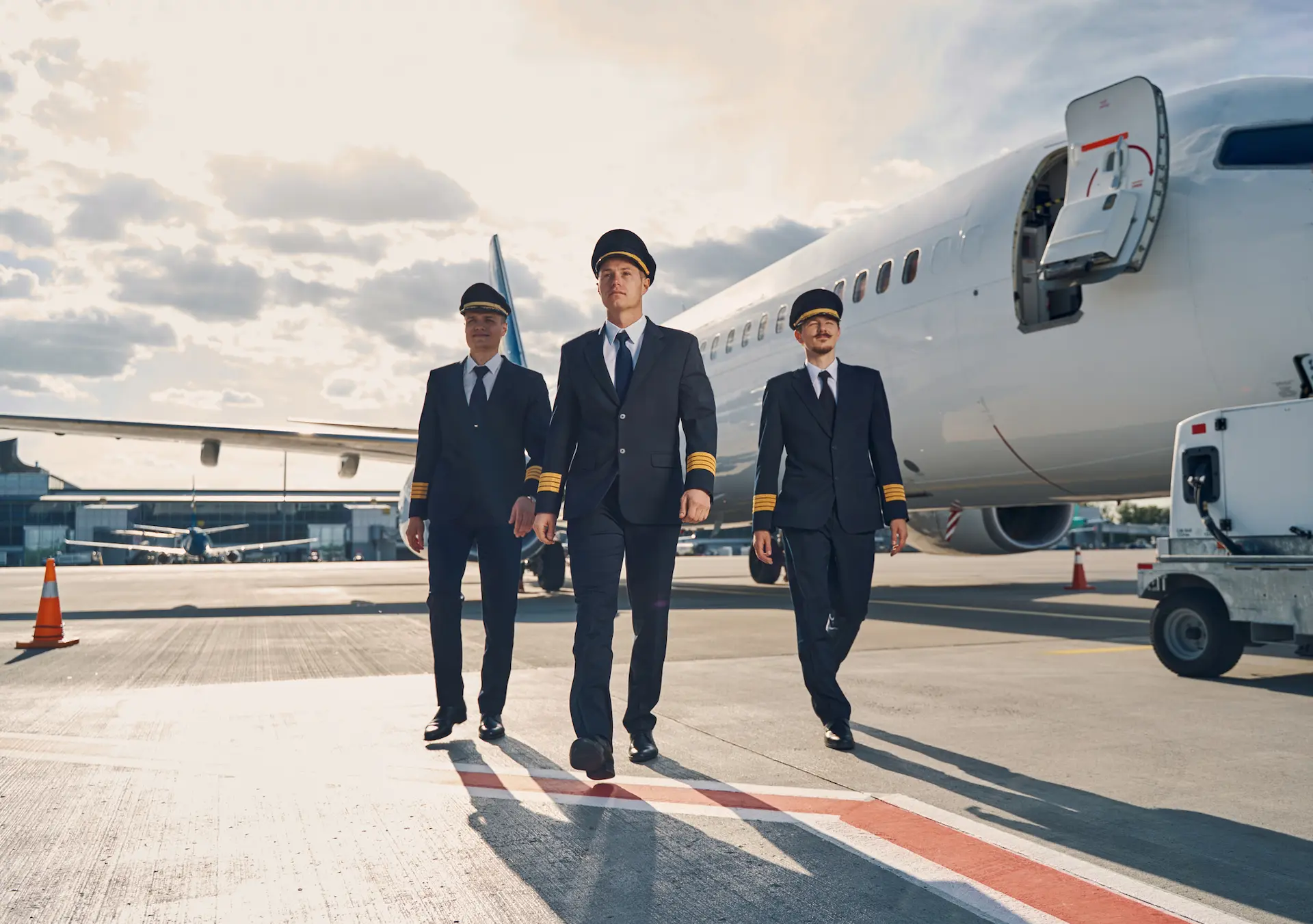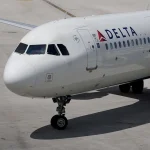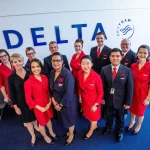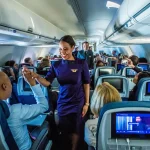If you’ve ever dreamed of flying a commercial jetliner and wearing the uniform of one of the world’s most respected airlines, the Delta Airlines Cadet Program could be your gateway. This program isn’t just about learning to fly, it’s about becoming a leader in the aviation industry. Delta’s cadet pathway was designed to build not only competent pilots but also future captains who understand operational integrity, safety culture, and the values of professional aviation.
As a prospective pilot, you probably already know that flight training can be expensive, fragmented, and uncertain. Delta aims to fix that. The cadet program provides structure, mentorship, and a direct pathway into the Delta network, starting from your very first hour in the cockpit all the way to the right seat of a Delta Connection aircraft, and eventually, Delta Air Lines itself.
In this comprehensive guide, you’ll learn exactly what the program offers, who it’s for, what the training involves, and how you can apply.
What Is the Delta Airlines Cadet Program?
The Delta Airlines Cadet Program is a structured training-to-employment pipeline designed to develop professional pilots from the ground up. It’s operated in partnership with Delta Connection carriers, including Endeavor Air, SkyWest Airlines, and Republic Airways, who handle Delta’s regional operations.
Delta’s vision is clear: address the national pilot shortage, ensure a high-quality pipeline of future captains, and offer opportunities to individuals from diverse backgrounds who may not otherwise access commercial aviation.
The program integrates:
- FAA-regulated flight training
- Formal mentorship with Delta and Delta Connection pilots
- Fast-track employment agreements with partner airlines
- A structured path toward Delta mainline roles
It’s not just a training program. It’s a career ecosystem. Airline career paths often overlap with operational divisions, so United Airlines cargo offers useful context on how large carriers structure roles.
Who Can Apply to the Delta Airlines Cadet Program?
You don’t need thousands of hours in the air to qualify, but you do need to meet specific baseline criteria. Here’s what Delta typically looks for:
Minimum Eligibility:
- Age: At least 18 years old
- Citizenship: U.S. citizen or legal permanent resident
- Education: High school diploma or GED (college degree is preferred but not required)
- Language: Fluent in English (per FAA standards)
- Background: Clean FAA record and ability to pass a background check
Preferred Qualifications:
- Leadership experience (military, ROTC, or other)
- Technical aptitude and STEM coursework
- Prior exposure to aviation or flight training
- Professional demeanor and teamwork mindset
Disqualifying Factors:
- FAA enforcement actions
- Drug or alcohol violations
- Felony convictions
- Failure to pass FAA Class 1 medical
Delta looks for individuals who embody reliability, situational awareness, and professional integrity, not just flying skills.
What Are the Entry Pathways to the Cadet Program?
Delta offers multiple entry points based on your experience level and educational background.
1. University/Flight School Partnerships
If you’re attending a Delta Propel Partner Institution such as Auburn University, Middle Tennessee State University, or Embry-Riddle, you may apply directly through your aviation program. This route offers a streamlined transition with university support.
2. Private-to-ATP Pathway
Already started flight training independently? If you hold a Private Pilot License (PPL) and are pursuing instrument and commercial ratings, you can apply as an independent cadet through Delta’s affiliated flight schools.
3. Military Aviator Path
For former or current military pilots, Delta offers a military transition pathway, where your flight hours and operational experience are credited toward the program requirements. This path also includes leadership fast-tracking options.
Each entry point includes mentorship, oversight, and career integration with Delta’s regional partners.
If you’re comparing programs and outcomes, our Delta flight attendant guide helps you understand an alternative route into airline careers.
How Does the Training Process Work at Delta?
The cadet training process is FAA-certified, competency-based, and professionally mentored.
Training Breakdown:
Phase: Ground School
Description: Aerodynamics, systems, airspace, weather, FAA regulations
Duration: 2–3 months
Phase: Primary Flight Training
Description: PPL through commercial multi-engine
Duration: 8–14 months
Phase: Simulator Training
Description: High-fidelity flight simulation with scenario-based drills
Duration: Ongoing
Phase: CRM & Professionalism
Description: Crew Resource Management, communication, and professional development
Duration: Integrated throughout
You’ll fly in G1000-equipped aircraft and transition to simulators replicating Embraer and Bombardier regional jets. Delta assigns active pilots as mentors who guide you throughout the journey.
This isn’t just about checking off hours. It’s about building proficiency, decision-making under stress, and understanding commercial operations.
What Certifications Do You Get Through the Program?
Delta’s cadet program leads to full FAA certification, readying you for ATP-level commercial flight.
Certifications Earned:
- Private Pilot License (PPL)
- Instrument Rating (IR)
- Commercial Pilot License (CPL)
- Multi-Engine Rating
- Certified Flight Instructor (CFI/CFII) (optional but encouraged)
- Airline Transport Pilot (ATP) Certificate
Delta ensures you meet all FAA Part 61 and Part 141 training standards, with logged flight hours and simulator time verified and tracked for compliance.
How Long Does It Take to Become a Pilot Through the Delta Cadet Program?
You can become eligible to fly as a First Officer with a Delta Connection carrier in 24–30 months.
Time Estimates:
- 0 to PPL: 3–4 months
- PPL to CPL + IR + Multi: 10–14 months
- Time building to 1,500 hours: 10–12 months (often via CFI work)
- Hiring process + type rating: 2–3 months
Delta’s program timeline aligns with the 1,500-hour ATP rule, ensuring you’re FAA-compliant and airline-ready within 2.5 years, assuming consistent progress and health.
If you’re looking at non-flight roles, Delta remote jobs covers work options outside pilot and cabin crew tracks.
What Does the Delta Airlines Cadet Program Cost?
Delta’s cadet program typically costs between $80,000 and $100,000, depending on the partner school and training path.
Typical Costs:
- PPL to CPL (Multi-Engine): $65,000–$75,000
- CFI/CFII: $8,000–$12,000
- Simulator/ATP-CTP Training: Covered by Delta Connection partners
Financing Options:
- Federal and private student loans
- GI Bill (for veterans at eligible schools)
- Delta’s financial assistance and reimbursement programs
- Cadet pay during CFI period (if applicable)
You may be offered a conditional employment agreement early in the process, giving you the confidence to invest.
What Career Path Awaits After Program Completion?
Graduates are offered positions as First Officers at Delta Connection airlines such as SkyWest, Endeavor, or Republic.
Career Progression:
- Year 1–2: First Officer at regional (ERJ-175, CRJ-900)
- Year 3–5: Upgrade to Captain, build leadership time
- Year 5–8: Competitive selection for Delta mainline (A220, A320, 737)
Delta hires hundreds of regional captains annually from its internal pilot development pipeline. The seniority you build early has long-term benefits for base selection, equipment, and schedule.
How Does the Delta Cadet Program Compare to Other Airlines’ Programs?
Delta’s cadet program competes directly with those from United Aviate, American Airlines Cadet Academy, JetBlue Gateway Select, and others.
Comparison Highlights:
Delta Airlines
- Cost: $80K–$100K
- Direct mainline pathway: Yes
- Mentorship: Strong
- Job placement: Conditional offer
United Aviate
- Cost: $85K–$95K
- Direct mainline pathway: Yes
- Mentorship: Yes
- Job placement: Conditional offer
American Cadet Academy
- Cost: $95K–$110K
- Direct mainline pathway: Yes
- Mentorship: Yes
- Job placement: Conditional offer
JetBlue Gateway Select
- Cost: ~$120K
- Direct mainline pathway: Yes
- Mentorship: Yes
- Job placement: Conditional offer
Delta stands out for its established reputation, high retention rate, and multi-path entry options.
What Are the Success Rates and Program Outcomes?
Delta has not published specific cadet graduation rates publicly, but industry metrics suggest:
- 80%+ of cadets graduate from training successfully
- 90%+ of successful graduates receive offers from Delta Connection
- Average time to mainline hire: 6–8 years
Delta monitors metrics like checkride pass rates, CFI productivity, and flight hour accumulation speed to track cadet progress.
How to Apply for the Delta Cadet Program
Application Process:
- Choose a Delta-partnered flight school or university
- Meet eligibility requirements
- Submit online application and personal statement
- Complete aptitude tests and personality assessments
- Attend panel interviews with Delta representatives
- Receive a conditional offer and begin training
You should prepare your FAA medical, resume, and references in advance. Some schools have rolling admissions; others have set cycles.
Expert Tips for Success in the Delta Cadet Program
- Log every hour meticulously: Missing data can delay ATP eligibility
- Build relationships with mentors: Mentorship is built into Delta’s culture
- Prepare for simulator stress tests: CRM and communication often matter more than technical skill
- Stay healthy: Class 1 Medical revalidation is critical every 6–12 months
- Think long-term: Focus on becoming a captain, not just getting hired
Cadets who treat training like a career, not just a step, tend to succeed the fastest.
FAQs About the Delta Airlines Cadet Program
Can international students apply?
No. Only U.S. citizens and permanent residents are eligible.
Do you need prior flying experience?
No. You can apply with zero hours, though having a PPL can accelerate your progress.
Is job placement guaranteed after graduation?
No job is guaranteed, but most graduates are placed at regional partners via conditional offers.
Can you choose your base or aircraft?
Base preference is considered but assigned by operational need. Fleet assignments follow seniority.





